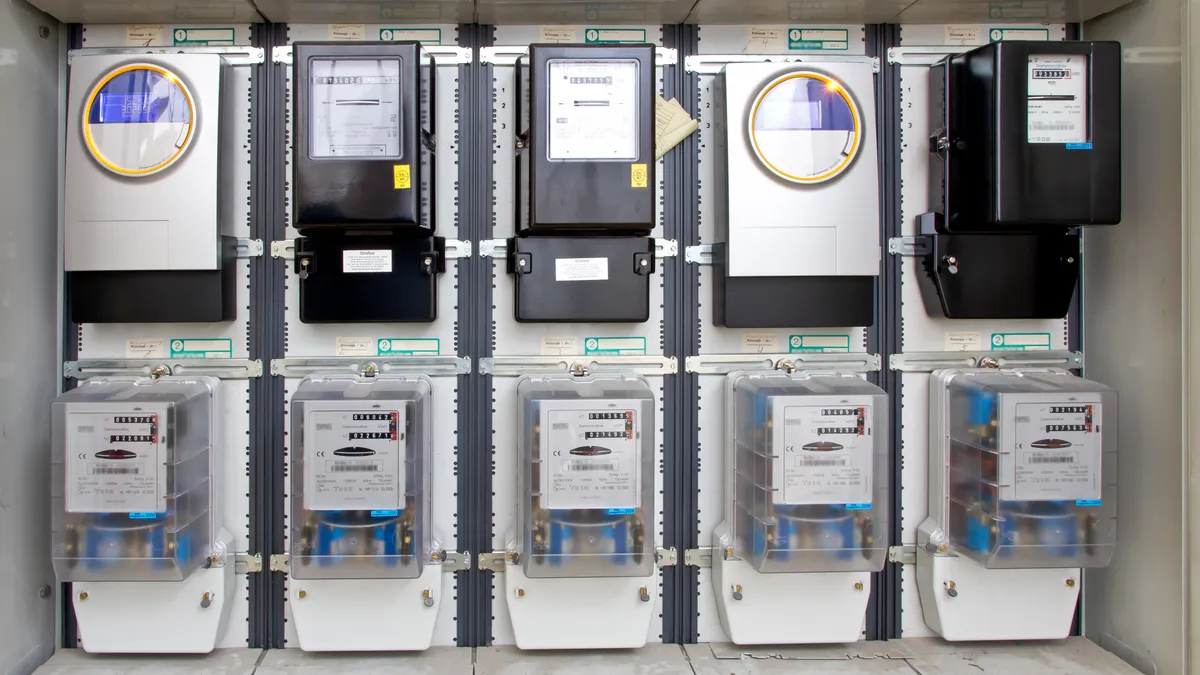Dive Brief:
- A number of utlities are seeing significant increases in smart meter deployments, including ConEd and Duke, which are adding over 3 million each in their service territories between 2018 and 2020.
- But while advanced metering infrastructure is considered a key enabling technology for grid modernization, experts say installations are slowing as more customers receive the new devices and some regulators balk at the additional costs.
- Smart meters deployed by utilities in the United States reached about 98 million at the end of 2019, according to new data from the Edison Foundation Institute for Electric Innovation (IEI). By the end of 2020, they are expected to number 107 million.
Dive Insight:
The number of smart meters deployed increased more than three-fold from 2011 to 2018, but while there are some notable exceptions, additions now appear to be slowing as some markets saturate and the impact of federal investment wanes.
Data from IEI shows installations rose more than 11% annually from 2017 through 2019. But if the 2020 estimate bears out, it would amount to an increase of just 9.1%.
"We also expect a slight slow-down in AMI deployments," Navigant Research Analyst Michael Kelly told Utility Dive in an email. "Much of the explosive growth witnessed in the 2010s was a result of the Smart Grid Investment Grant Program."
Navigant is currently forecasting about 100 million smart meters on the U.S. grid at the end of 2020.
The advanced metering grant program was a part of the Energy Independence and Security Act of 2007. The program led to an investment of about $8 billion for grid upgrades, according to the U.S. Department of Energy. That resulted in the deployment of tens of millions of meters in a short timeframe, said Kelly.
As of 2019, Navigant says, more than 60% of investor-owned utilities and nearly 75% of cooperatives have deployed smart meters.
"Essentially, the pie is shrinking," said Kelly. And some states have been wary of smart meter costs.
Last year, regulators in Virginia rejected Dominion Energy’s proposed smart meter rollout. Similar decisions have been seen in New Mexico, Massachusetts and Kentucky. Kelly said those states account for only about 6.8% of the installed meter base nationwide, and so are unlikely to dramatically affect overall market potential. "But they should not be discounted," he added.
IEI, whose members are investor-owned electric companies, sees smart meter deployment differently.
"Over the past five years, deployments have been fairly constant at about 9 to 10 million smart meters per year, which demonstrates continued state regulatory support of electric company investments in smarter energy infrastructure," an IEI spokesperson told Utility Dive in an email.
The group says overall penetration is now "well above" 50%.
Utilities are adding smart meters at dramatically different rates. IEI's report sees Duke Energy growing advanced metering from 3.8 million to 7.5 million in six states, from 2018 to 2020. Entergy will go from 21,000 smart meters to to more than 2.2 million across the same time frame in four states, the report shows.
Consolidated Edison, which operates in New York City, will go from about 800,000 smart meters in 2018 to more than 4 million by the end of this year, according to the report. Utility officials say they have now deployed about half of the 4.8 million total meters that are planned, and the devices are already providing benefits back to the utility.
"It is the largest capital project in company history and we are pleased with the early results," a Consolidated Edison spokesperson told Utility Dive in an email. The meters inform the utility of outages, allowing for faster restorations, and give customers data to manage their usage.
According to IEI, utilities were projected to invest more than $39 billion in their distribution systems last year, out of a projected $135.6 billion in total investments.















